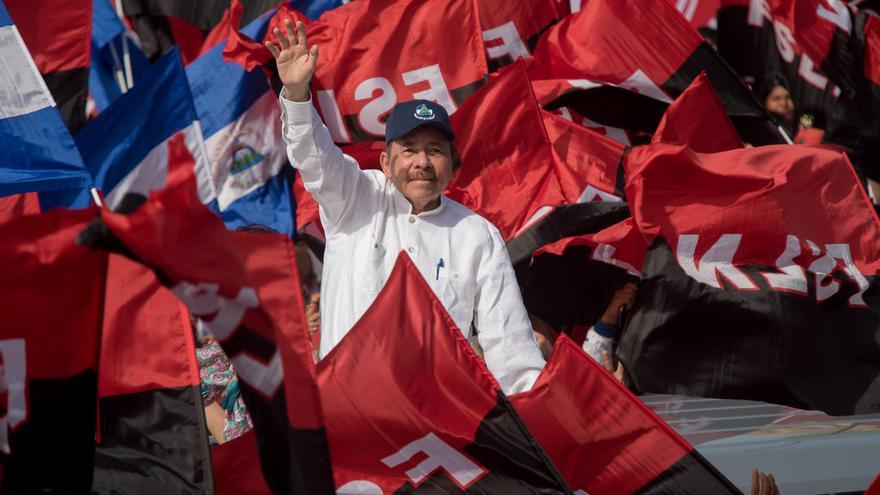
![]() 14ymedio, Francisco Larios, Miami, January 22, 2019 — I don’t know with what words, nor with how many amplified speakers, email messages, publicity posters, speeches, and pleas, to recommend “Connecting the dots between totalitarianisms,” a magnificent work by the painter and writer Otto Aguilar.
14ymedio, Francisco Larios, Miami, January 22, 2019 — I don’t know with what words, nor with how many amplified speakers, email messages, publicity posters, speeches, and pleas, to recommend “Connecting the dots between totalitarianisms,” a magnificent work by the painter and writer Otto Aguilar.
My motivation is this: I believe that the massacre of 2018 and all the crimes that are being committed in Nicaragua come from the lie that has been lived since 1979, the year in which we believed that we were touching heaven with our hands, and in a blind ectasy we allowed a gang that was not fit for power to accumulate it in excess.
I know that it’s painful for many, still, at this stage, to confront that brutal reality. Many of those who today oppose Ortega-Murilla, and are even their victims, were part of the movement, like an enormous number of people that at the time acted out of principal and decency.
Many of them cried, and I don’t say that in the figurative sense, when the dictatorship of the FSLN fell in defeat in 1990. It even cost them years, after that defeat, to break completely with the mother tree.
They have attempted later, instead of facing the truth, to create another myth, that of “before the ‘piñata’ — the idealistic revolution and its achievements — and after the ‘piñata,’ the hijacking of the party and the decline.”
But the evidence that has accumulated for more than 30 years is overwhelming, and should force them to return to the lost path, not only for themselves, but at some point for all of us: the path of truth.
To begin, one has to put the “Sandinista revolution” between quotation marks and throw the key into the trash.
It’s quite certain, there was a popular insurrection against the dictatorship, also genocidal, of the Somozas. The rebellion was full of heroism and desperation, and of a passionate desire to build a utopian future.
Then they arrived, the same ones as always, the foxes of power.
In such a manner that from the revolution there was guillotine, and privileges for a few. Of equality, fraternity, and liberty, very little. Much Hollywood and Bollywood, much revolutionary tourism, affectation, and high-profile Machiavellianism, at the same time lots of torture, robbery, crime; and the rest, the same as our entire previous history.
If before it was the peons of the haciendas who were the “volunteers with rope,” the cannon fodder of the oligarchs and caudillos, during the Frentista dictatorship (that one goes without quotation marks) such disgrace touched an entire generation of young people, kidnapped by the totalitarian state and used as pieces in their chess game of blood.
For that reason I also was struck by the book Perra Vida, the memoirs of the adolescence of the writer Juan Sobalvarro, in which he beautifully narrates, from his own experience as a recruit, what the kids who at that time couldn’t evade conscription lived through.
That’s why I repeat my message to the translators and communicators of the story that still clings to the myth of the “Sandinista revolution:” the most revolutionary thing they could do, the bravest, the most beautiful legacy, the one that can change history for the good (not “revise it”) is to denounce the root of the tragedy: having let the tree grow twisted since the beginning, despite having been irrigated with so much generosity by so many.
Translated by: Sheilagh Carey
Editors’ Note: This text was published by the Nicaraguan digital outlet Confidencial, which has authorized us to reproduce it here.
___________________________
The 14ymedio team is committed to serious journalism that reflects the reality of deep Cuba. Thank you for joining us on this long road. We invite you to continue supporting us, but this time by becoming a member of 14ymedio. Together we can continue to transform journalism in Cuba.
